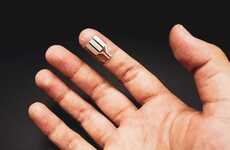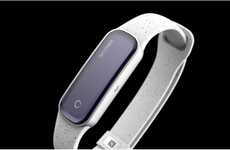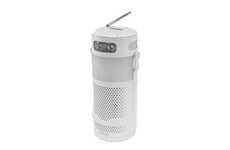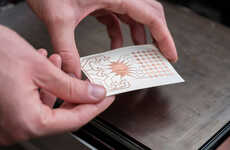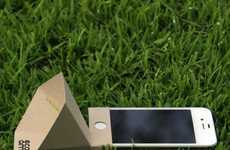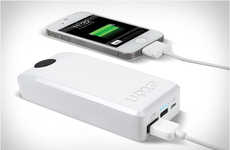
M13 is a Genetically Engineered Virus that Powers Your Mobile
Wes Walcott — August 24, 2012 — Eco
References: scientificamerican & techspot
In their ongoing search to find eco-friendly sources of energy, scientists have devised methods to harness power from smaller and smaller living things, such as the M13 bacteriophage. Engineers at the University of California, Berkeley, have managed to generate electricity using an organic virus. Although the virus – known as the M13 bacteriophage – is active, there’s no need to worry about contracting an illness because it’s engineered to only attack a specific kind of bacteria. This means that, in the near future, you might not have to worry about finding an outlet to charge your cell phone.
By relying on a property known as piezoelectricity, the M13 bacteriophage is able to convert mechanical energy, like curling your fingers to make a fist, into electrical energy, which can then be used to power electronics. When researchers attached a 1 square-centimeter film coated with the virus to a pair of gold electrodes, the film produced roughly a quarter of the energy produced by a single AAA battery – just enough electricity to display the number 1 on an LCD display. Although this might seem insignificant, the experiment proves that biomaterial piezoelectrics can be integrated into current electronic devices.
The long-term goal of the research is to develop this technology and use it to make consumer products, such as cell phones, that can be charged while you walk.
By relying on a property known as piezoelectricity, the M13 bacteriophage is able to convert mechanical energy, like curling your fingers to make a fist, into electrical energy, which can then be used to power electronics. When researchers attached a 1 square-centimeter film coated with the virus to a pair of gold electrodes, the film produced roughly a quarter of the energy produced by a single AAA battery – just enough electricity to display the number 1 on an LCD display. Although this might seem insignificant, the experiment proves that biomaterial piezoelectrics can be integrated into current electronic devices.
The long-term goal of the research is to develop this technology and use it to make consumer products, such as cell phones, that can be charged while you walk.
Trend Themes
1. Biomaterials Piezoelectrics Integration - Developing biomaterials piezoelectrics integration can lead to eco-friendly power sources for various electronic devices.
2. Virus-powered Technology - Utilizing viruses for alternative energy sources in technology has the potential to revolutionize the accessibility and availability of eco-friendly power.
3. Walking Chargers - The development of walking chargers has the potential to change the way we approach energy efficiency for electronic devices, making it convenient for people on-the-go.
Industry Implications
1. Consumer Electronics - The consumer electronics industry can explore the integration of biomaterials piezoelectrics and virus-powered technology to create eco-friendly and self-charging devices.
2. Biotechnology - The biotechnology industry can further research on virus-powered alternative energy sources for various applications in technology.
3. Sustainable Energy - The sustainable energy industry can explore and invest in utilizing virus-powered technology as an eco-friendly alternative energy source.
1.7
Score
Popularity
Activity
Freshness

